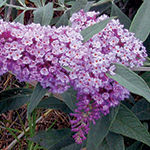
Invasive – Butterfly Bush
(Buddleia davidii and cvs.)
1. Meyer Lilac
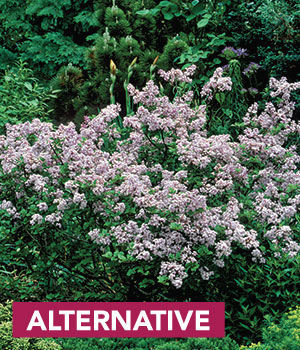
Name: Syringa meyeri
USDA Hardiness Zones: 4 to 7
Size: 6 feet tall and wide
Conditions: Full sun to partial shade; average, well-drained soil
This species lilac is shorter and more rounded than many other lilacs, with foliage and flowers appearing even at ground level. It bears familiar fragrant, light lavender to purple blooms in late spring, attracting visiting bees and other insect pollinators. Meyer lilac is resistant to powdery mildew.
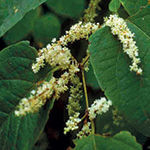
Invasive – Japanese Knotweed
(Fallopia japonica)
2. Western Red Osier Dogwood
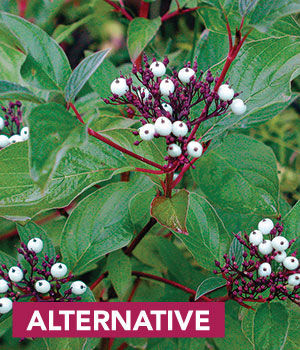
Name: Cornus sericea ssp. occidentalis
Zones: 3 to 8
Size: Reaches up to 10 feet tall and 9 feet wide
Conditions: Full sun to partial shade; average to moist soil
Western red osier dogwood is a drought-tolerant Pacific Northwest native that performs well in a wide range of settings. Its large, arching branches form a vase shape, which may be maintained by removing larger branches from the base. White spring flowers on flat-topped inflorescences attract butterflies; white berries follow, favored by birds. Leaves turn shades of red and purple in autumn, while new red branches provide a stunning display in winter. This plant may spread by stolons.

Invasive – Herb Robert
(Geranium robertianum)
3. Bloody Cranesbill

Name: Geranium sanguineum and cvs.
Zones: 3 to 8
Size: 12 to 18 inches tall, spreading to 18 inches
Conditions: Partial shade; average, well-drained soil
Bloody cranesbill is a vigorous but compact herbaceous perennial with masses of attractive foliage and flowers. It grows in a spreading and mounding form and is often used as a ground cover. Summer flowers are pale pink to reddish purple.
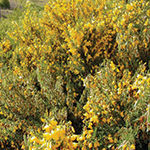
Invasive – Scotch Broom
(Cytisus scoparius)
4. Forsythia
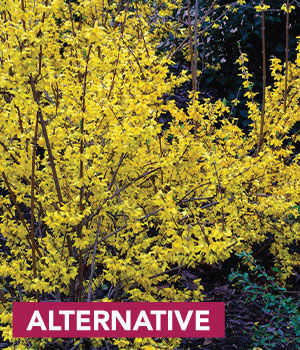
Name: Forsythia intermedia cvs.
Zones: 6 to 9
Size: 8 to 10 feet tall and 10 to 12 feet wide
Conditions: Full sun preferred but will tolerate partial shade; average, well-drained soil
Forsythia’s brilliant yellow blossoms are a familiar sign of spring, while pale to deep green leaves adorn its branches throughout the rest of the season. After the leaves drop in autumn, the newer yellow-and-light-green branches provide winter interest. Forsythia naturally grows in a fountain shape; prune entire branches from the base to maintain this appearance.
Linda R. McMahan is a horticulturist for the Oregon State University Extension Service in McMinnville, Oregon
Photos: #1 (invasive), Forest and Kim Starr, Starr Environmental/www.bugwood.org; #1 (alternative), Susan A. Roth; #2 (invasive), Leslie Seiger, San Diego Mesa College/www.bugwood.org; #2 (alternative), courtesy of Linda R. McMahan; #3 (invasive), Robert Vidéki, Doronicum Kft./www.bugwood.org; #3 (alternative), Michelle Gervais; #4 (invasive), Richard Old, XID Services, Inc./www.bugwood.org; #4 (alternative), Steve Aitken

















Comments
Log in or create an account to post a comment.
Sign up Log in